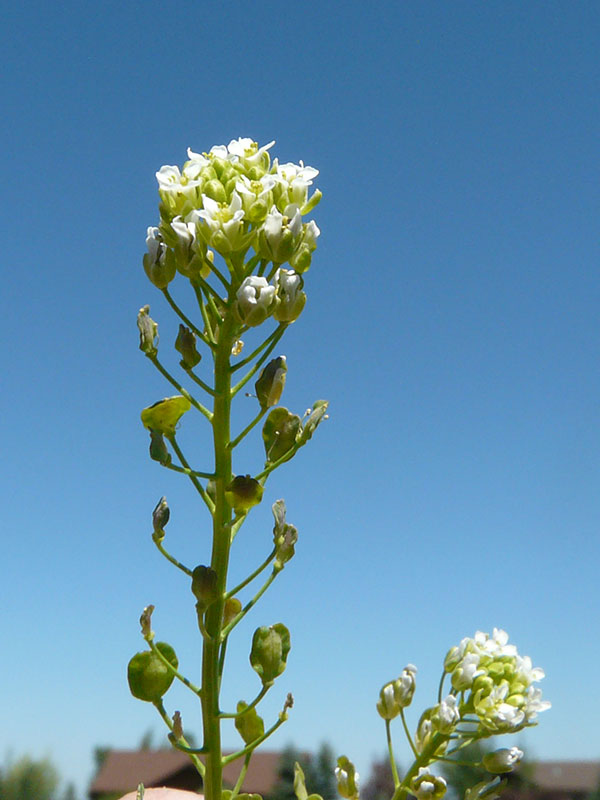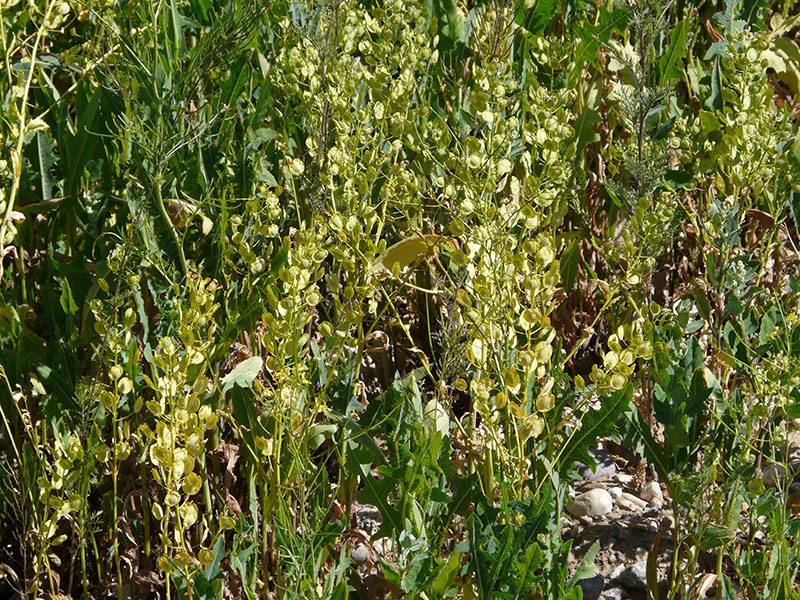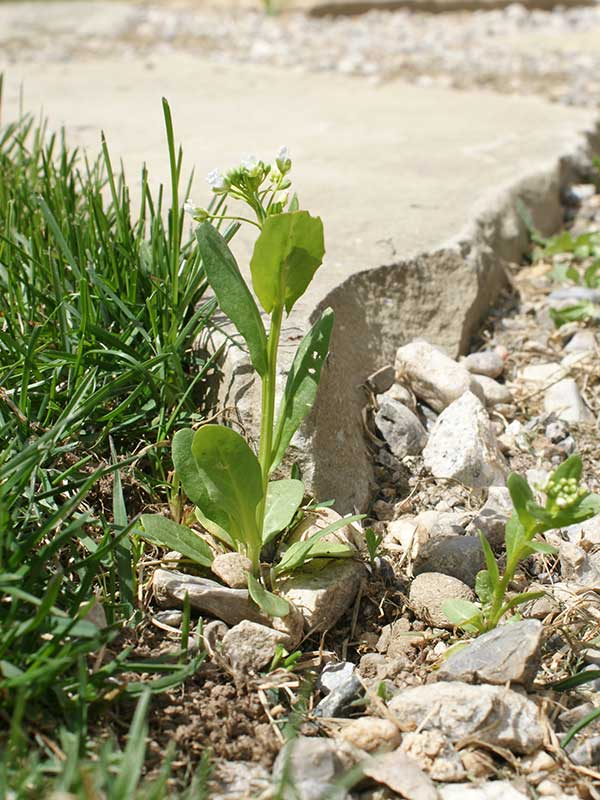Thlaspi arvense / field pennycress
- inflorescence a raceme with white, teeny flowers
- oval seed pods ca. 1/3″ across
- blooms late spring and summer
- continues blooming as pods fill from older flowers
- common weed in disturbed habitats including cultivated land
Also known as: fanweed, french weed, penny-grass, stinkweed, mithridate mustard; German: Acker-Täschelkraut, Acker-Hellerkraut; French: herbe aux écus, tabouret des champs; Spanish: carrapisque; telaspio; Finnish:peltotaskuruoho
“Let he who throws wild oats, field pennycress or any other weed into a neighbour’s field lose his honour and be fined… and pay compensation for damage”. – Finnish law, 1734
The least distinctive characteristic of field pennycress is the flower. Like all other members of the family (Cruciferae, Brassicaceae), they have 4 petals. Like about half the members of the family, they are white. They are also teeny, ca. 1/8″ across and appear in clusters (racemes) at the ends of the central and side stems… like many, many other members of the family. Initially, the flowers bloom near the apex of the racemes, which continue to lengthen as the flowering season goes on. Nothing distinctive there either. The plants start blooming early in the spring and continue into summer with the seedpods maturing in about 60 days. Flowering is indeterminate, meaning it doesn’t just happen all at once, with new flowers appearing as the pods from older ones mature.
The most distinctive characteristic of field pennycress is the “large” size of the seedpods (silicula; about 1/3″ long). The pods are flat, round and winged with a deep notch at the tip. The dried stems with the pods hang around even into the winter when they break off, slide across the snow and spread their joy. Other members of the family have seedpods that are long and slender, or, if they are like those of field pennycress, they are significantly smaller. Given that each seedpod has several to many seeds, the seeds are minuscule (which is even smaller than teeny).
The least pleasant but also distinctive characteristic of field pennycress is its smell when the leaves are crushed. It has been called foetid or like garlic. As the smell comes from one of the many nasty compounds in the mustard members of the family, it can also make milk smell and taste “off”.
Field pennycress is an annual, germinating at any time of the year, which helps make it a great weed. It grows in any disturbed area, but doesn’t like shade or competition in stable ecosystems. If it germinates in the fall, it overwinters as a “winter annual” with a rosette of sort-of-oval leaves flat against the soil. These wilt and disappear early in the spring growing season.
Then, as the plant bolts, upper stem leaves appear. These are long with an arrow-shaped bases and slightly wavy margins with fine teeth. The leaves are mostly sessile. The middle and upper stem leaves have “ear-like” lobes that clasp the stem.
It is a credit to someone’s imagination that various teams of scientists are trying to develop field pennycress as an oilseed crop for production of renewable fuels. The species can be planted in the fall, and will germinate and form a vegetative mass which can overwinter. Then, in the spring, the oil-rich seed can be harvested and used as a biodiesel feedstock. Both the genome and transcriptome have been sequenced for use in genetic efforts to increase the seed oil content.
| Color | |
|---|---|
| Family | |
| Blossom size | |
| Inflorescence size | |
| Inflorescence type | |
| When? | |
| Where? |







